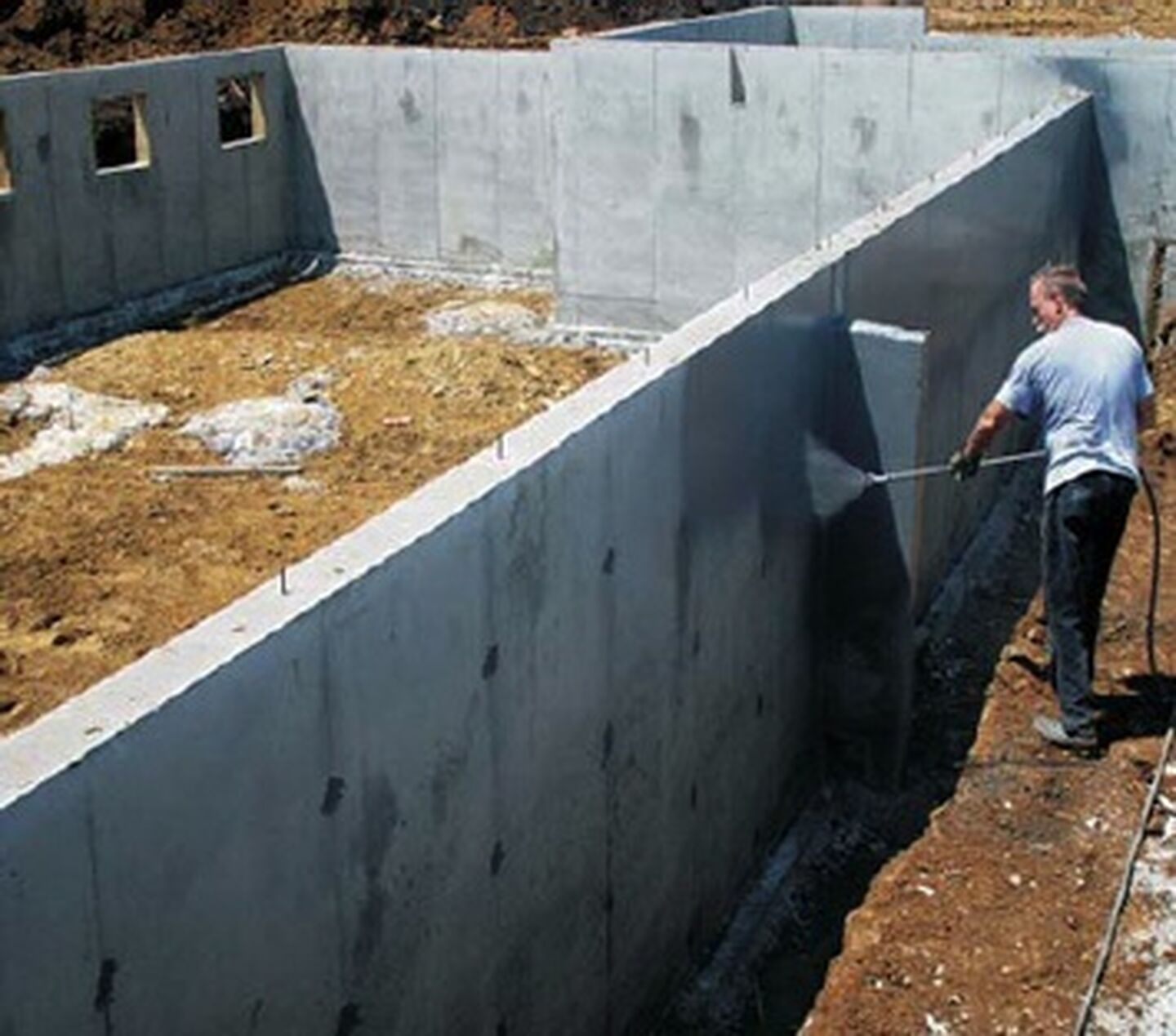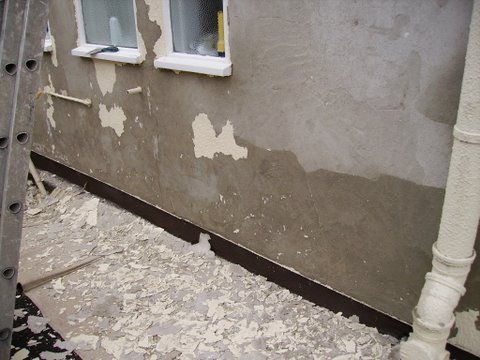Understanding the cost of professional damp removal newcastle
Understanding the cost of professional damp removal newcastle
Blog Article
Exploring the Numerous Methods and Solutions for Effective Damp Proofing
Dampness in structures postures substantial obstacles to both architectural stability and interior air high quality. Numerous methods and remedies have actually emerged to combat this pervasive issue. From traditional damp-proof membrane layers to innovative chemical treatments, each technique offers special benefits. Understanding these alternatives is important for efficient wetness control. Selecting the best service depends on specific structure problems and requirements, triggering further expedition right into the most effective damp proofing approaches offered.
Comprehending the Root Causes Of Dampness
Dampness can occur from various resources, comprehending these causes is important for effective removal. Typically, moisture originates from 3 key sources: increasing moist, permeating moist, and condensation. Increasing wet takes place when groundwater travels up via permeable products, such as brick or rock, commonly because of an absence of a reliable barrier (damp removal newcastle). Passing through moist is generally brought on by outside factors, consisting of roofing system leakages, faulty rain gutters, or harmed wall surfaces, enabling water to penetrate a property. Condensation, on the various other hand, arises from excess wetness in the air, frequently aggravated by bad ventilation and temperature distinctions, resulting in water droplets developing on surfaces. Identifying these underlying concerns is important, as each kind of dampness calls for a customized strategy for removal. Proper evaluation aids in figuring out one of the most effective services, ultimately securing the architectural integrity of a building and improving interior air high quality
Traditional Damp-Proof Membranes

Chemical Damp-Proofing Solutions
Chemical damp-proofing remedies offer an innovative method to avoid wetness invasion in buildings. These techniques commonly entail the application of fluid chemicals that pass through stonework and develop an obstacle versus rising wet. Generally made use of chemicals consist of silanes, siloxanes, and various other water-repellent agents that react with surface products to develop a hydrophobic layer.The application procedure usually needs boring holes right into the wall surfaces, infusing the chemical remedy, and allowing it to heal. This approach is especially helpful for older frameworks where standard damp-proof membrane layers may be impractical. Additionally, chemical damp-proofing can be less disruptive and much more cost-efficient than extensive renovation projects.While reliable, these remedies depend upon appropriate application and environmental problems for peak performance. Regular upkeep and tracking are important to ensure the long life of the damp-proofing therapy. Overall, chemical damp-proofing stands for a flexible choice for safeguarding structures against moisture-related damage
Cavity Wall Surface Construction Techniques
Cavity wall surface building and construction techniques use numerous benefits, particularly in moisture control and energy performance. By incorporating an air space in between two layers of masonry, these wall surfaces successfully mitigate water ingress while boosting insulation. This mix not just secures structures from dampness but likewise contributes to lowered power intake.
Advantages of Cavity Wall Surfaces
When taking into consideration effective wet proofing methods, the benefits of tooth cavity wall surfaces attract attention plainly. Cavity wall surfaces contain 2 different layers, developing an air void that efficiently lowers dampness infiltration. This style lessens the threat of wetness, as the outer wall functions as a barrier against rainfall and water access. Additionally, tooth cavity walls boost thermal insulation, which adds to power efficiency by minimizing warm loss. They likewise supply audio insulation, aiding to develop a quieter indoor setting. Furthermore, the air gap permits ventilation, which helps in dampness control and minimizes the chance of mold growth. These advantages not only improve the overall comfort of a structure yet also contribute to its longevity and structural honesty.
Moisture Control Approaches
Reliable wetness control strategies are vital in tooth cavity wall building to assure long-term security against dampness. One main technique entails the consolidation of weep openings, which help with water drainage from the cavity, preventing build-up. In addition, making use of breathable membranes can help manage wetness levels while permitting entraped vapor to leave. Appropriate positioning of insulation is also critical, as it ought to not obstruct water drainage paths. Guaranteeing that the outer fallen leaves of the cavity wall surface are constructed with waterproof products boosts general resilience. Routine maintenance checks are important to recognize any kind of blockages or damage early, guarding the structure's stability. Inevitably, a mix of these strategies forms a durable defense against moisture breach in dental caries walls.
Insulation and Energy Performance
Insulation plays an important duty in boosting power efficiency within cavity wall surface building. By including shielding products, these walls produce a thermal barrier that lessens warm loss and lowers power intake. Reliable insulation not just helps maintain a secure interior temperature level but likewise alleviates the danger of moisture, as it prevents condensation within the wall dental caries. Various techniques, such as making use of inflexible foam boards or mineral woollen, can be used to achieve suitable insulation performance. In addition, proper installation is necessary to guarantee that spaces and voids are reduced, which can or else compromise energy performance. Ultimately, a well-insulated cavity wall surface adds significantly to general sustainability and reduces cooling and heating prices for house owners.
Outside Damp Proofing Techniques
Outside damp proofing techniques are crucial for protecting structures from wetness seepage. Two efficient techniques consist of the application of waterproof membrane layers and the installation of French drains pipes. These remedies help mitigate water accumulation and preserve the stability of structures.
Waterproof Membrane Layer Application
While various techniques exist for preventing wetness access, the application of waterproof membrane layers stays a highly reliable outside moist proofing technique. These membrane layers are normally made from materials such as polyethylene, rubber, or customized bitumen, supplying a robust barrier versus water penetration. The installment procedure entails using the membrane layer to the external surface areas of foundations or wall surfaces, making sure full insurance coverage to stop leakages. Correct bond and sealing at joints are vital to optimizing efficiency. Waterproof membrane layers can be used in different kinds, consisting of fluid layers and sheet membrane layers, enabling flexibility based upon the details needs of the structure. This approach not only secures structures from wetness yet likewise boosts their longevity and structural honesty.
French Drainpipe Installation
One effective method for taking care of groundwater and avoiding dampness buildup around a building's foundation is the installation of a French drainpipe. This water drainage system includes a trench full of gravel and a perforated pipe that reroutes surface area water far from the structure. Correct installment needs careful preparation, making sure that the drain slopes away from the structure to promote suitable water circulation. Additionally, the place of the drainpipe is essential; it needs to be positioned in areas susceptible to pooling or excess wetness. Regular maintenance, consisting of cleaning particles from the gravel and making sure the pipe stays unobstructed, is important for long-lasting effectiveness. Ultimately, a well-installed French drain can significantly lower the danger of water-related issues in foundations and basements.
Inside Waterproofing Techniques
Inside waterproofing approaches are vital for protecting a structure's interior from wetness seepage and potential water damages. These approaches commonly involve the application of specific materials and techniques made to develop a wetness barrier within the structure. One typical method is making use of water-proof coverings or sealers on wall surfaces and floors, which protect against wetness from passing through surfaces.Additionally, installing indoor drain systems, such as sump pumps, can efficiently manage water accumulation in basements and crawl spaces. An additional approach involves the use of vapor obstacles, which are mounted to hinder moisture movement from the ground right into living spaces.Moreover, attending to any kind of cracks or gaps in wall surfaces or structures with ideal sealers ensures a comprehensive protection versus water breach. By executing these indoor waterproofing approaches, homeowner can substantially lower the risk of mold growth, architectural damages, and various other moisture-related concerns. Proper execution of these techniques is important for long-term defense and building integrity.
Normal Upkeep and Assessment Practices
Regular upkeep and assessment practices are vital for assuring the lasting effectiveness of moist proofing services in any kind of structure. Routine checks allow residential property owners to identify early indications of wetness invasion, such as peeling off paint, mold development, and musty smells. These indicators can signal underlying problems that call for prompt attention.Inspections need to be conducted a minimum of annually, concentrating on susceptible areas like cellars, crawl rooms, and outside wall surfaces. Throughout these analyses, residential or commercial property proprietors ought to analyze sealers, water drainage systems, and air flow to validate they operate correctly.Additionally, keeping downspouts and rain gutters is necessary, as stopped up systems can lead to water build-up near the structure. Implementing a regular upkeep routine, together with timely fixings, can substantially prolong the life expectancy of damp proofing steps and protect the architectural integrity of the structure. Aggressive steps eventually contribute to the overall health and security of the living atmosphere.
Often Asked Inquiries
For How Long Does Damp Proofing Normally Last?
The duration of moist proofing effectiveness differs, normally lasting in between 20 to 50 years. Elements such as application quality, environmental problems, and upkeep methods substantially influence the long life of the moist proofing therapy.

Can I Damp Evidence My Home Myself?
The private pondered the feasibility of DIY damp proofing. With appropriate study and the ideal materials, it is possible. Nevertheless, they likewise acknowledged the relevance of expert assistance to assure durable effectiveness and stop future concerns.
What Are the Indicators of Inadequate Damp Proofing?
Indicators of inefficient moist proofing consist of consistent mildewy smells, visible mold development, peeling off paint, moist patches on walls, and wood decay - damp specialist newcastle. Homeowners ought to deal with these problems promptly to protect against further damages and wellness problems
Does Damp Proofing Affect Indoor Air High Quality?

Just How Much Does Expert Damp Proofing Price?
Professional damp proofing costs vary substantially, commonly ranging from $1,000 to $5,000 relying on the property's size, the level of the damp issue, and picked techniques. Each scenario requires more info a customized assessment for exact rates. Commonly, wetness originates from 3 key sources: rising damp, permeating moist, and condensation. When considering efficient damp proofing approaches, the advantages of cavity wall surfaces stand out prominently. Outside damp proofing methods are crucial for securing frameworks from wetness seepage. While numerous approaches exist for preventing wetness access, the application of water resistant membrane layers continues to be a highly effective external wet proofing method. Indications of inefficient wet proofing include relentless moldy smells, noticeable mold growth, peeling paint, wet patches on wall surfaces, and timber degeneration.
Report this page